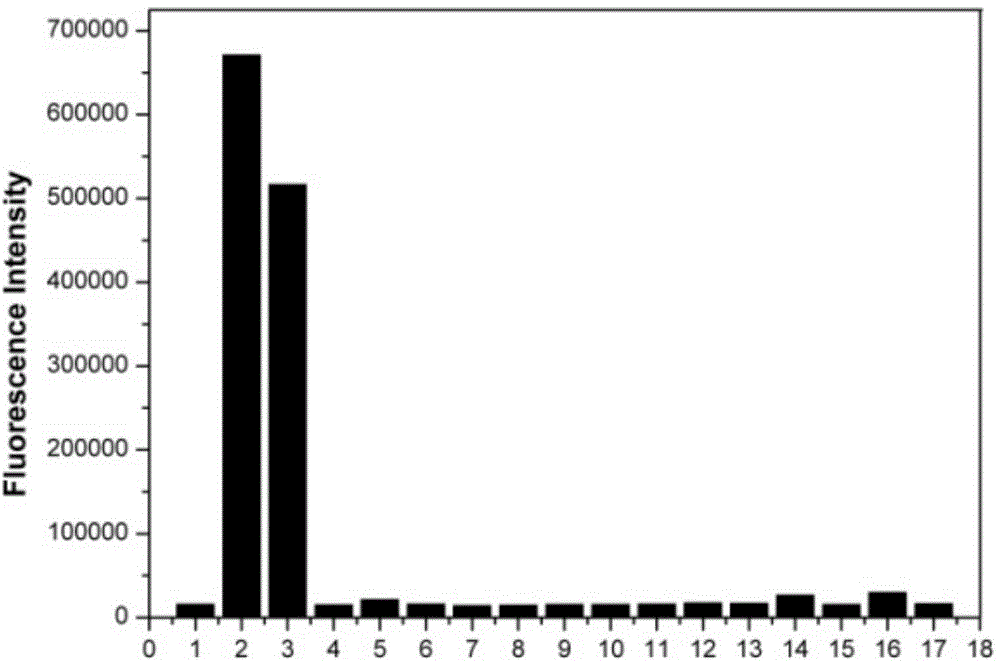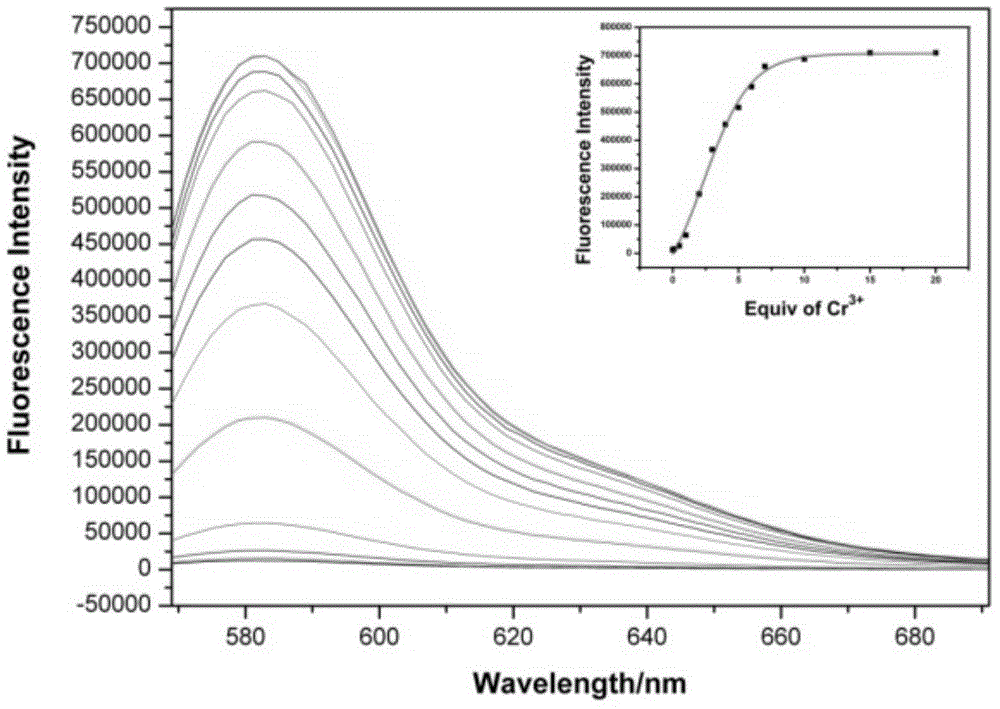Rhodamine B-based fluorescence sensor and preparation
A technology of fluorescent sensor and aminocaproic acid, which is applied in the field of fluorescent sensor and its preparation, can solve the problems of expensive detection and insufficient fast detection, and achieve the effects of good selectivity, high sensitivity, and resource saving
- Summary
- Abstract
- Description
- Claims
- Application Information
AI Technical Summary
Problems solved by technology
Method used
Image
Examples
Embodiment Construction
[0022] The synthetic route of the present invention is as follows:
[0023]
[0024] 1. Synthesis of target compounds
[0025] 1. Add 100 mg of 3-(3',6'-bis(diethylamino)-3-oxaspiro[isoindoline-1,-1,9'-xanthene]-2-yl)propane (see the article Design and synthesis of a novel Rhodamine B[2]rotaxane) was dissolved in 5mL of methanol, then 79mg of 6-aminocaproic acid was added, and stirred at room temperature for 2h;
[0026] 2. Weigh 85mg of sodium triacetylborohydride, dissolve it in 1ml of tetrahydrofuran, add it to the above reaction solution with a pipette gun, continue to stir at room temperature, use TLC to detect the reaction progress, and the reaction is complete in 3 hours;
[0027] 3. Add 1 mL of saturated sodium bicarbonate solution dropwise to the above reaction solution, and continue to stir for 10 minutes. The saturated sodium bicarbonate is to quench the sodium triacetylborohydride added thereto;
[0028] 4. Remove the solvent with a rotary evaporator, and sepa...
PUM
 Login to View More
Login to View More Abstract
Description
Claims
Application Information
 Login to View More
Login to View More - R&D
- Intellectual Property
- Life Sciences
- Materials
- Tech Scout
- Unparalleled Data Quality
- Higher Quality Content
- 60% Fewer Hallucinations
Browse by: Latest US Patents, China's latest patents, Technical Efficacy Thesaurus, Application Domain, Technology Topic, Popular Technical Reports.
© 2025 PatSnap. All rights reserved.Legal|Privacy policy|Modern Slavery Act Transparency Statement|Sitemap|About US| Contact US: help@patsnap.com



